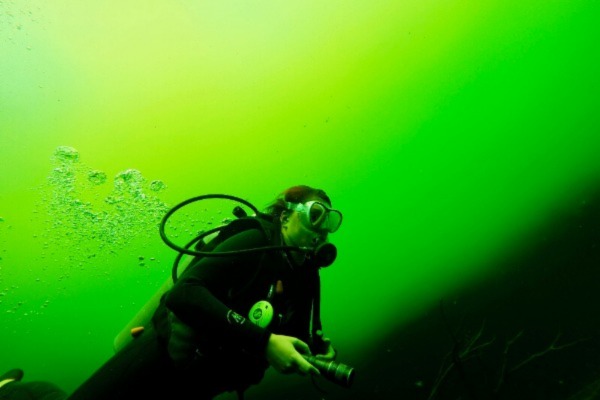New microbes discovered in pigs, fish, the top of the world and the bottom of the ocean
Posted on December 19, 2022 by Charlotte Hartley
Each month, the Microbiology Society publishes the International Journal of Systematic and Evolutionary Microbiology, which details newly discovered species of bacteria, fungi and protists. Here are some of the new species that have been discovered and the places they've been found.
This month’s first new microbe is a colourful one. The novel bacterium Arthrobacter antioxidans is pink-hued, but can also produce a water-soluble blue pigment. Like other Arthrobacter species, it can survive extreme environments and was isolated from the soil of the East Rongbuk Glacier of Mount Everest. Fittingly, whole genome sequencing revealed that the novel species has a number of genes associated with antioxidation, surviving cold temperatures and resisting ultraviolet (UV) radiation.
For our next new microbe, we need to travel all the way down Mount Everest, and then another 6,000 m below sea level. Muricauda abyssi is a novel marine bacterium isolated from deep seawater in the Mariana Trench – the deepest point in the Earth’s oceans. It is Gram-negative, rod-shaped and non-motile. Researchers report that the new species grows in yellow, circular colonies.
In another aquatic discovery, researchers in China discovered two strains of the novel species Caldovatus aquaticus in a sample collected from a microbial mat. Microbial mats are communities of microbes that form a continuous, layered sheet. They usually grow at the interface between two different types of substances – in this case, on the surface of a hot spring. The strains are aerobic, Gram-negative, oval-shaped and motile. They are also thermophilic, meaning they have adapted to surviving in warm temperatures.

Our next three novel microbes were all hidden away in the guts of unsuspecting animals. The first came from the gut of an olive flounder caught by a fisherman off the east coast of South Korea. Researchers isolated a novel, Gram-negative bacterium which they named Enterovibrio paralichthyis, after the Latin name for the fish (Paralichthys olivaceus). The bacterium is flagellated and can grow in coccoid, ovoid or rod shapes.
Back on land, another group of researchers discovered that two strains of Campylobacter bacteria, which were initially isolated from the gut lining of a pig back in the 1980s, actually represent two novel species: C. majalis and C. suis. The genus Campylobacter, which can cause food poisoning in humans, is not uncommon in pigs. In fact, pigs and other livestock are a reservoir for the transmission of these bacteria to humans.
This month’s final novel microbe is one to keep an eye on. Bdellovibrio reynosensis was isolated from a soil sample in Mexico and forms circular plaques. Researchers describe its movement as “fast darting motility” and identified genes associated with predation of other bacteria. The genus Bdellovibrio contains other predatory species, which enter their prey cells and consume them from within. This novel species appears to do the same when grown on a plate with Klebsiella oxytoca and other Gram-negative bacteria. It also showed resistance to three types of antibiotics, but was sensitive to others.
